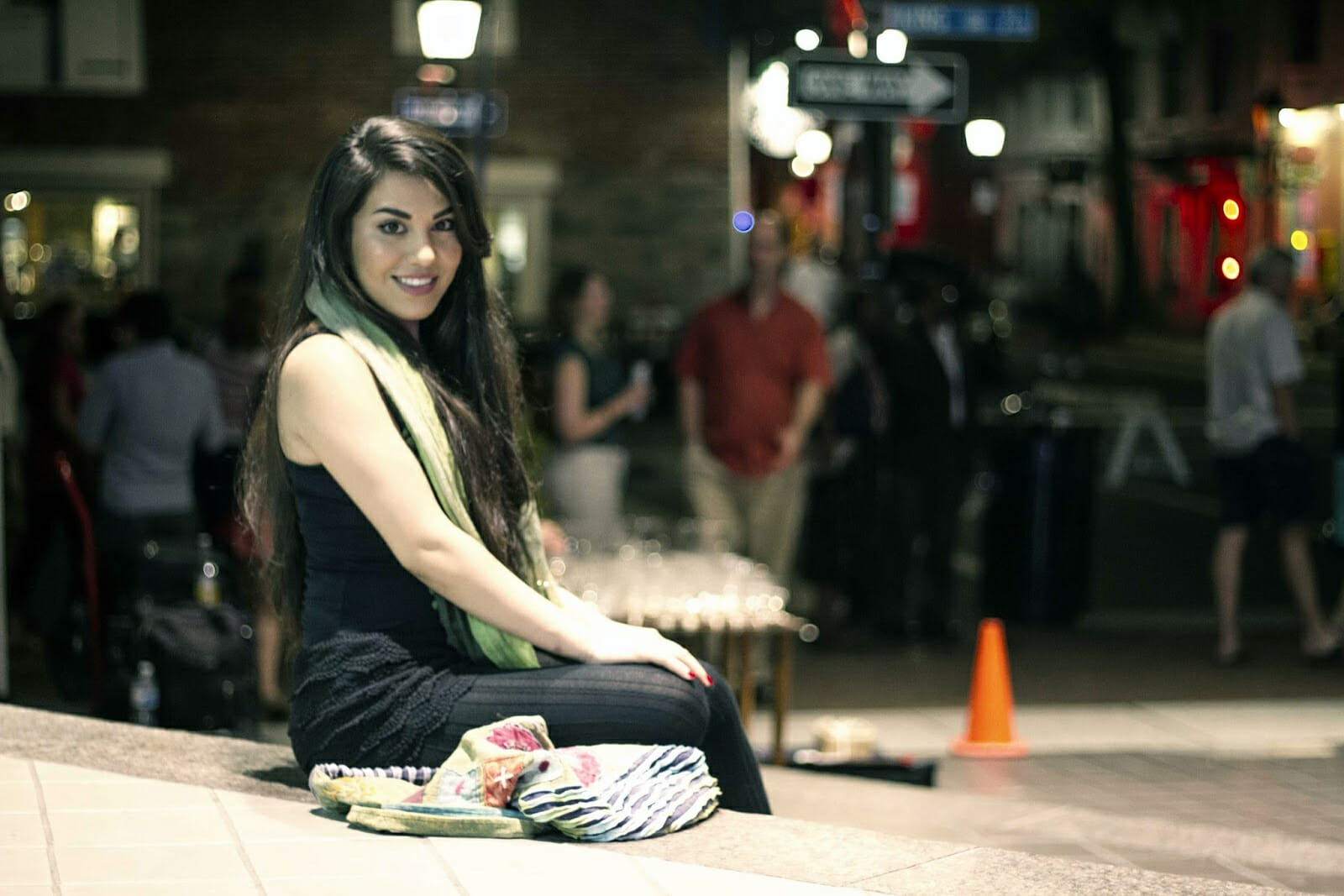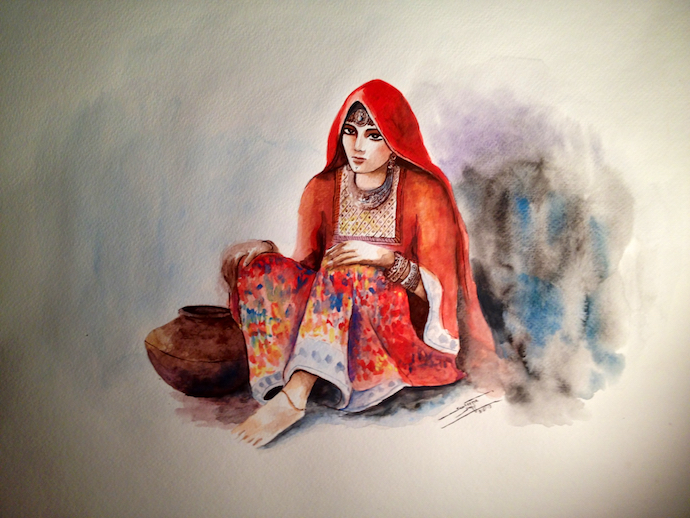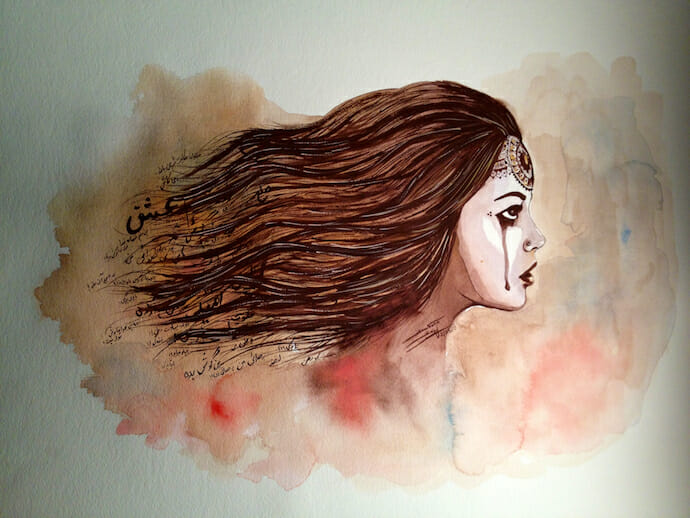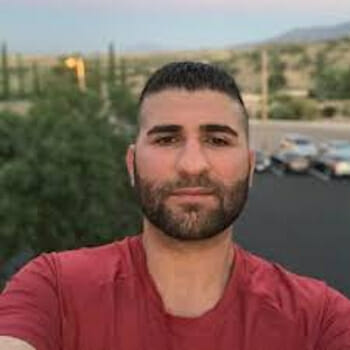
Culture
Afghan Artist Meena Saifi Explains her Craft
What is art? It depends whom you ask. Tolstoy wrote that the activity and aim of art was to “evoke in oneself a feeling one has once experienced, having evoked it in oneself, then by means of movements, lines, colors, sounds, or forms expressed in words, so to transmit that feeling that others may experience the same feeling.”
An artist’s task is not only to communicate his/her own feelings to a wider world, but also the sufferings and pains of those in society. John Galsworthy in his essay on “Art” defined it as “that imaginative expression of human energy, which through technical concretion of feeling and perception, tends to reconcile the individual with the universal, by exciting in him impersonal emotion.” Above all, it is this quality (linking the individual’s experience with the universal) that has rendered art perpetual in our cultural and social existence. Like poetry, there are many definitions of art. While there may be differences in what it means to different people, its power, its ability to move people, and its capacity for igniting feelings of freedom, love, and hope remain firm in us.
Like a great thinker, an artist possesses the ability to unleash uproar in society. Quoting the man who inspired him to pursue philosophy, Nietzsche wrote, “Beware, says [Ralph Waldo] Emerson, ‘when the great God lets loose a thinker on this planet. Then all things are at risk. It is as when a conflagration has broken out in a great city, and no man knows what is safe, or where it will end.’” Artists too exercise such authority in society. Perhaps this has to do with their desire to question calcified traditions. Through their artwork, they raise questions that society considers taboo, radical, and detrimental to social conventions.
Not surprisingly, fascist groups, authoritarian regimes, and dictatorships fear the disruptive liberality of writers and artists. As they ascend to power, their first priority is to harness such “subversive groups” or entirely remove them from society. Remember the Taliban. Upon their capture of Kabul in 1996, they began to attack artists, musicians, and intellectuals. This campaign turned tens of thousands of Afghans’ lives into a nightmare. Music and art have an important impact on people in a society. By seeking to extinguish artists’ desire to create, musicians’ yearning to make music, and intellectuals’ power to produce knowledge, the Taliban were trying to control people’s passions, their inner feelings, and ways of expressing their personal and political views.
Given the Taliban’s vicious attacks on all things civilized, many Afghans left the country for any place they could find refuge.
 Meena Saifi, a prominent Afghan artist and a rising star in the international art community, moved with her family and the families of many other Afghans and took refuge in Pakistan. Born into a cultured family, Meena soon developed an interest in drawing and painting. Despite many ups and downs ab initio, she forged forward and continued her training under the famous Afghan artist Qais Nawabi – whom she considers her Ustaad (master). “Dream,” an oil painting and Meena’s first work was an instant success. It wasn’t long before the international world of art became aware of and took an interest in Meena’s artwork. While her painting “Dream” established her as an artist, “Baba Panjshiri” (Panjshiri grandfather) propelled her into international fame and recognition.
Meena Saifi, a prominent Afghan artist and a rising star in the international art community, moved with her family and the families of many other Afghans and took refuge in Pakistan. Born into a cultured family, Meena soon developed an interest in drawing and painting. Despite many ups and downs ab initio, she forged forward and continued her training under the famous Afghan artist Qais Nawabi – whom she considers her Ustaad (master). “Dream,” an oil painting and Meena’s first work was an instant success. It wasn’t long before the international world of art became aware of and took an interest in Meena’s artwork. While her painting “Dream” established her as an artist, “Baba Panjshiri” (Panjshiri grandfather) propelled her into international fame and recognition.
Since her first painting at the age of sixteen, Meena has held many exhibitions of her work throughout the world. Her first show was in Pakistan in 2007, and her first international art exhibition followed in Phoenix, Arizona in 2009. Many art collectors and connoisseurs participated in this event, and Meena’s reputation as a serious artist was recognized. Meena is no longer an obscure name in the world of art. She is an international phenomenon who continues to create and inspire…since 2009, her work has appeared in art exhibitions in New York, Los Angeles, France, and Afghanistan.
Born with a fire for creation and beauty, Meena continues her involvement with art projects around the world, including the Pool Art Fair, Art Warning the World, The Kabul Art Project.
Below is an interview I conducted with her recently.
Your artwork has begun its march toward international fame. How did you begin as an artist?
I feel like I was born an artist, as I inherited this gift from my father. My father Asadullah Saifi was a creative calligraphic artist. After our settlement in Pakistan, he established a school under the name of “Ashqari” in Rawalpindi, Pakistan in 1995. As a way to encourage me and pique my curiosity in the world of intellect and art, he involved me in helping him with the school’s programs. One day, I was in my Persian class, and instead of taking notes, I started drawing a portrait of my teacher, Ustad Mohsin Khan. Mr. Khan had an explosive temper. He would not tolerate any student who wasn’t listening to his lectures. I recall as he was walking up and down in class one day, with hands clenched behind his back and reciting the famous Persian poet Hafiz’s poetry, when suddenly I found him at my desk. “O bad bakht wa nalaeq”; “oh you unfortunate creature, how dare you engage in drawing during my lecture?” I was scared and taken aback as he continued to yell at me.
My action bothered him so much that he took me to the principal’s office, who was my father. When my father looked at the piece of paper on which I had been drawing, a big smile broke across his face. As my teacher went on recounting my “wrong actions” in class, my father was just absorbed in and completely overtaken by what I had drawn. Finally, after listening to my teacher’s complaints, my father raised his voice saying, “Oh Ustad [Professor], for once you should stop complaining and just look at the drawing!” Once my teacher looked at my drawing, he too smiled. That was a defining moment in my life. From that moment on, I knew that my true passion was art. I was only nine years old at the time, but my father was extremely supportive of my interest in art. He continued to support and encourage me in all sorts of ways until he passed away. Needless to say, without him, I would not have travelled this far in life.
 Art means something different to each person. What is art to you? How do you define it?
Art means something different to each person. What is art to you? How do you define it?
That is a great question. Art is to bring out that voice that exists within us, to create and to paint a clear picture of our thoughts and feelings so that everyone can see that inner beauty existing in us. Ultimately, the purpose of art is to convert our imagination into reality and share it with the world.
Do you have a favorite piece of work? If yes, what makes it so special to you? What’s the story behind it?
That is almost an impossible question to answer. I love every thing that I’ve created so far. I mean I work hard on every piece. There is of course a story and a narrative behind most of what I create. I paint portraits of people closest to me. By doing so, I’m expressing the feelings I have for them. It’s my way of communicating to them that even though I may be physically afar from them, I’m still thinking of them…
Federico Fellini – the esteemed Italian film director – once said, “All art is biographical.” How much of your work draws from your background? How much of your personal life do you bring into your work?
I previously mentioned that most of my work is about my family and friends. However, I’m most passionate about creating portraits of women and birds. It is a strange feeling but I’m most myself when I’m creating anything involving women and birds. Women, because I’m a woman and I feel like I’m emotionally connected to them, and can relate to their world, their experiences, their sufferings, etc. Birds, because I see them as a symbol of freedom, hope, and peace. There is something special about them. Their ability to soar high and roam around freely fascinates me.
What are some of your personal idiosyncrasies. When do you usually work best? And is there any daily activity that motivates you to work harder?
I love the rain; I often find myself outside when it is raining. No matter what time it is or how cold it is, I still go outside and just try to feel lost in it. I’m a nocturnal person, so I usually do my best work at night. I draw inspiration from the fact that I’m probably the only one working when everyone else is asleep.
Are there any international artists whose work you admire and follow?
There are many international artists whose works I admire. In a vast universe replete with remarkable artists, it’s hard to have one favorite. I draw inspiration from anyone who is in the business of creating beauty and behind whose work there’s a healing story.
How do you come up with ideas about creating a work of art?
An artist’s creative process is deeply personal and sacred.
Is there a way for people to follow your work and stay up to date on your new creations?
Yes, they can check out my Facebook fan page.
Do you have a favorite quote that you’d like to share today?
Sure. Here’s one of my favorite quotes from Rumi: “I want to sing like the birds sing, not worrying about who hears or what they think.”

